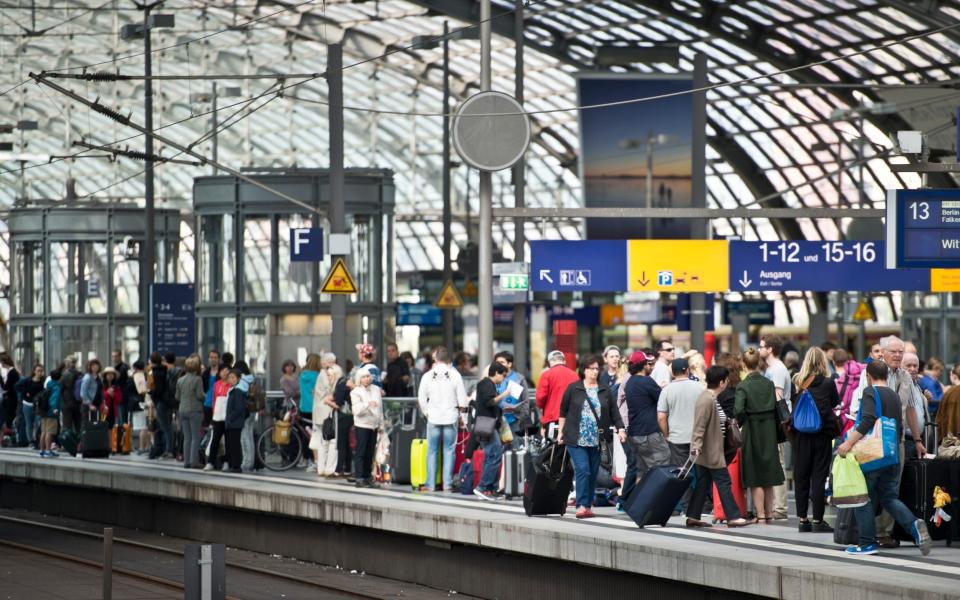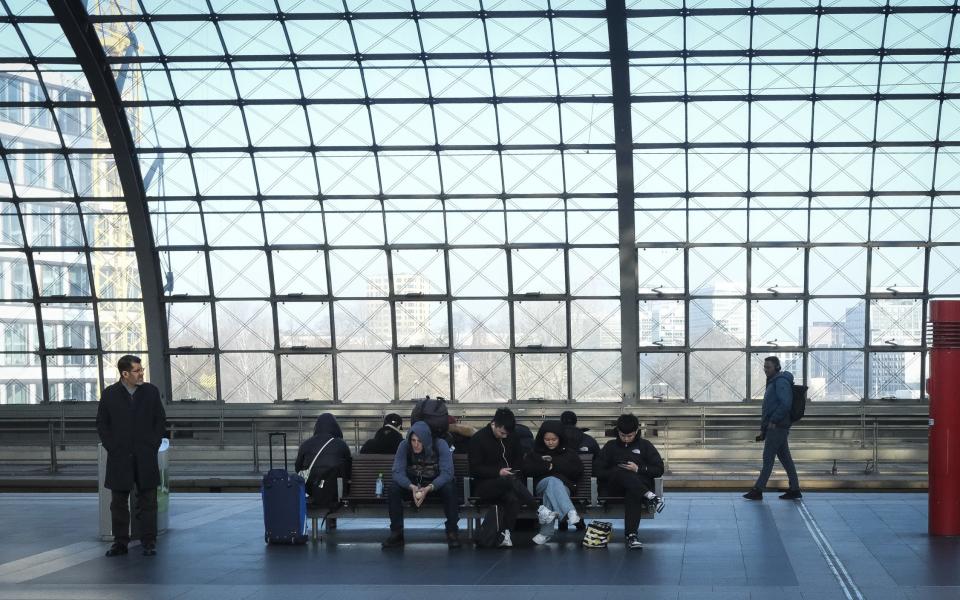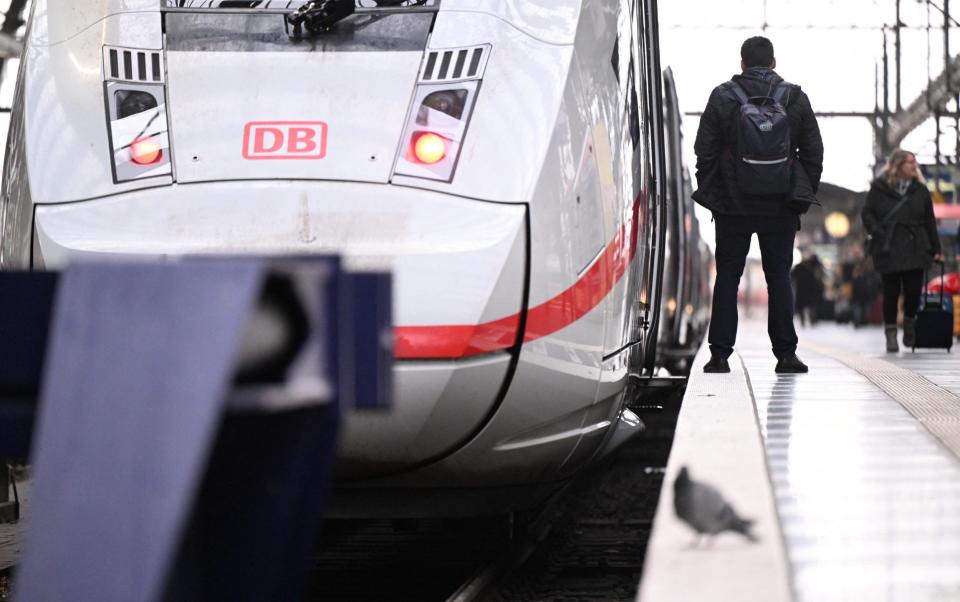Where it all went wrong for Germany’s railways

It’s been a bad couple of weeks for Germany’s feted rail network. Striking train drivers brought much of the system grinding to a halt last Thursday and Friday, and they’re promising more to come. Meanwhile a Washington-based research company, the Consumer Choice Center, has placed Bremen’s Hauptbahnhof a solid last position out of 50 European stations, in its annual Railway Station Index. It found that more than “43 percent of trains were delayed”, there were “only nine shops”, and “no access to free wifi”.
Germans will not be surprised at the bad publicity. They probably have a (very long) word for putting the boot in to their national rail network, because it has become something of a national pastime. And certainly the statistics don’t look good for a nation with a reputation for efficiency. Long-distance train punctuality is down at 73 percent, compared to a UK performance rating of 79 percent. But Deutsche Bahn says that around 75 per cent of those delays are because the trains are transiting through at least one construction site, due to their massive programme of investment and renovation.
Personally, I have little to complain about from recent experiences. I have just come back from a trip from Berlin to the Baltic, down to Dresden and back to Berlin. Two of those journeys involved three trains, with 10-15 minute connections between each. All worked fine. Every train was comfortable, there was plenty of space, with a plug socket by my seat to keep all my devices in trim. And if you look more closely at that European Railway Station Index, Zurich comes top (ah, those Swiss trains!), but there are also two German hubs, Berlin and Frankfurt, in the top ten.

Meanwhile the network is adding new departures, so some of this is growing pains. Hamburg to Copenhagen, and Berlin to Paris are recent sleeper introductions, and later this month, the European Sleeper, the most convenient of sleepers for UK travellers which up till now has linked Brussels with Berlin, is extending its service through to Dresden and ultimately Prague. En route it will offer a stop right in the heart of Saxon Switzerland, a mountainous forested area on the banks of the Elbe much loved by hikers and artists (including Caspar David Friedrich, who is enjoying a big anniversary in 2024). I travelled on that train in January, and although the carriages are frankly crummy – Eastern European from the late 1970s – the 11-hour journey arrived in Berlin precisely to time.
Over many years of German train travel I can recall just two occasions when my journeys have gone a bit in die Hose (literally “in the trousers”, aka pear-shaped). One was on an international train from Amsterdam to Cologne, which had to change locomotives once across the border. The Dutch loco disconnected and trundled off, looking smug, but its German equivalent didn’t have the grace to look remotely shame-faced when it finally turned up, 45 minutes late.
The other occasion was when Deutsche Bahn first introduced the bargain €49 per month pass, back in 2022, an idea which has proved so popular that it has since been adopted in part by Spain and this year is being introduced in France.

I was on a train out of Hamburg bound for Rostock and the seaside on a summer Friday afternoon, and I was not alone, far from it. In fact the throng was such that the train conductor lost her cool, and called the police. They made repeated calls for people to get off, but nobody budged – nobody was doing anything illegal – and the train eventually left, fully laden. It was mildly entertaining to see how nonplussed Germany’s railway officials could become when faced with the sort of overcrowding that is quite regular on British trains.
Part of the problem that the German network faces is its sheer scale. It has 20,753 miles of railway, double the UK’s 10,072, and it moves a lot of freight as well as passengers. For many rural areas it runs like a local bus, stopping at virtually every lamppost. For international travellers, that means keeping a wary eye on train designations. The ICEs (Inter City Express), ICs and EuroCity trains cost a bit more, and do what they say on the tin. At the other end of the scale are the RB trains (RegionalBahn, stops everywhere) and RE (RegionalExpress, faster, with fewer stops).

Many of the faster trains offer wifi, as do the stations, which makes me think that Bremen must have caught the inspector on a bad day. Many’s the time I’ve sat in a station bakery/coffee shop with my laptop fully connected. Station bakeries are ubiquitous, with irresistible käsestange crusty bread smothered in bacon and melted cheese, but so also are other forms of eatery. Hamburg has no fewer than 24 outlets, from sushi and vegan to Indian. What UK station can match that?
Architecturally, some of these buildings are up there with the great railway cathedrals of Europe. There’s Cologne’s giant curved glass roof on its main hall, like something out of Kew Gardens but ten times bigger. Frankfurt’s roof, too, does pretty fancy curves. And then there’s the new ones, particularly the Berlin Hauptbahnhof, built like a layer cake, a mesmerising open-plan spaghetti junction of railways arriving from different angles on different levels.
Some of the lesser known stations are undiscovered gems: I like Görlitz, in the farthest southeastern corner up against the Polish border, with its art nouveau interiors and echoing emptiness. And Leipzig, also art nouveau, whose huge archways and light sandstone façade earned it the title of the third best railway station in Europe back in 2020. Back then, just four years ago, no fewer than five of the top ten stations in the self-same Consumer Choice Center survey were German.
I daresay Deutsche Bahn currently has bigger concerns than Washington-based surveys, especially if these strikes continue. But if it wants to restore the Freundschaftsbezeugung (friendly relationship) it would like to have with its customers, there’s clearly some up-sock-pullage required.


